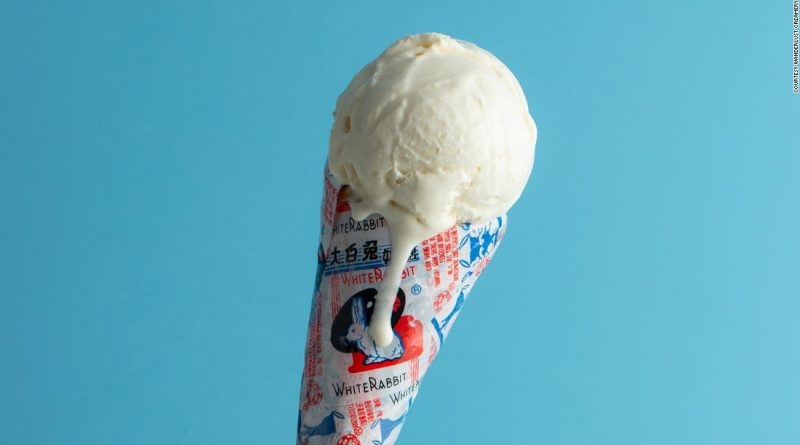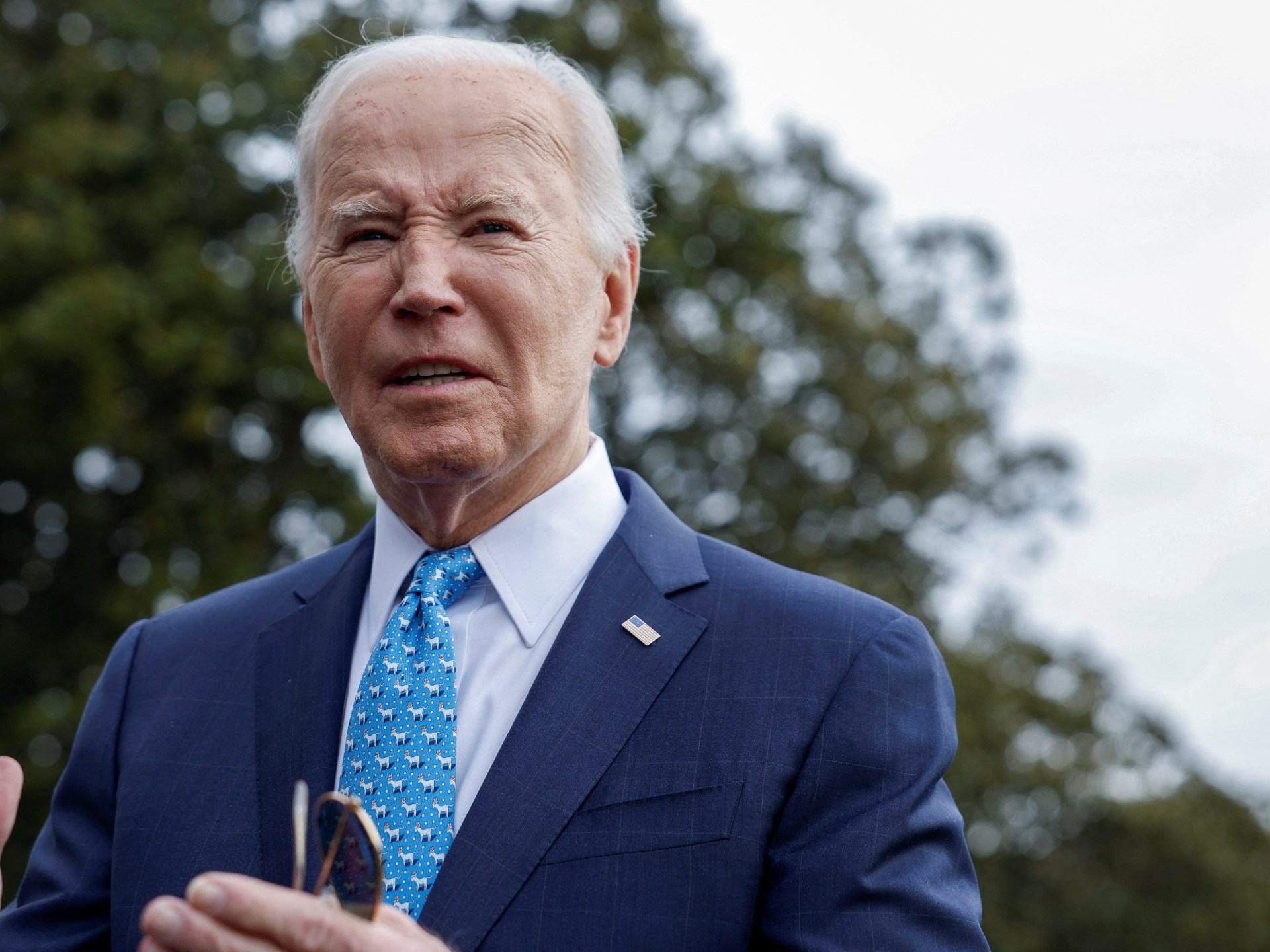How Shanghai’s White Rabbit candy became a globally beloved brand
(CNN) — When ice cream maker Adrienne Borlongan first experimented with a White Rabbit flavor, she thought it tasted like “cheap vanilla.”
A few weeks after adding it to the rotating lineup at her Los Angeles shop, Wanderlust Creamery, visitors were about as meh on it as she was.
But when Borlongan posted a photo of an ice cream cone wrapped in White Rabbit-branded paper, word quickly spread on social media. The candy, first manufactured in Shanghai in the 1940s, is known for its iconic red-white-and-blue packaging and beloved by kids all over China. And when Chinese people began emigrating all over the world, their love for the white, creamy candy went with them.
Soon after Borlongan posted that photo, people were driving to Wanderlust from all over California. And that’s when she realized she had a phenomenon on her hands.
Since then, White Rabbit has been a mainstay of Wanderlust’s ice cream lineup and is regularly sold out in their webshop.
But the story of a bestselling ice cream is about way more than taste — it’s about the Chinese diaspora, the power of nostalgia, and adorable, eye-catching branding.
Two cones of White Rabbit from Wanderlust Creamery.
Courtesy Wanderlust Creamery
Made in China
White Rabbit’s origins date back to a now-defunct business called the ABC Company, founded in Shanghai in 1943. It was later sold to the state-owned Guan Sheng Yuan Food Group, which owns it to this day.
Originally, the candies had a picture of Mickey Mouse on their wrappers — perfect for appealing to children. But as Chinese national pride soared and it became less fashionable to use Western images, the company rebranded and put a cartoon rabbit on the packaging instead.
Enter da bai tu. In Mandarin: big white rabbit.
White Rabbit succeeded as a symbol of China that didn’t have any connections to politics or controversy — a form of culinary diplomacy.
As for the flavor? The creamy consistency comes from actual milk, and there’s an edible piece of rice paper between the candy and the wrapper to prevent melting.
Over the years, White Rabbit tried out other flavors, including red bean and peanut. But it’s the original version that has the most nostalgia connected to it.

Some North Americans compare White Rabbit’s size, texture and consistency to that of Tootsie Rolls.
CNN/Maggie Hiufu Wong
CNN reached out to Guan Sheng Yuan but the company wouldn’t offer a comment about their product.
However the candy’s popularity can be easily seen in the enthusiastic response in the market towards all things White Rabbit.
The White Rabbit brand has amassed a devoted following among the newer generation that has moved beyond its various flavored candies.
When it teamed up with a local beauty brand to sell White Rabbit-inspired lip balms online in 2018, the first batch of 920 products sold out in half a minute. An additional 10,000 sets of lip balm sold out in three hours when sales opened the next day.
A new generation
Some of the kids who grew up snacking on White Rabbit candies are now artists, chefs and entrepreneurs doing their part to evolve the brand.
“It sweetened the childhood of many people.”
Growing up in Harbin in northern China, Li remembers White Rabbit as being closely linked with festivities in China — a luxurious gift for children as a special reward. But what inspires Li the most is the brand’s evolving business philosophy.
“As the modern business develops, their business philosophy also evolves, such as collaborating with other brands, opening pop-up stores, selling merchandise and opening their first flagship store,” says Li.

An interior shot of the White Rabbit flagship store.
Shao Feng
The brand’s modern identity is reflected in the decor of its first permanent flagship store, which also sells White Rabbit-themed merchandise like hand lotions, apparel and umbrellas.
Located in Shanghai’s new JKS Arts and Cultural Center, it feels more like a futuristic playground than a candy shop.
Greeted by a white, 3-D printed art installation — inspired by the flow of milk — that curves through the 200-square-meter space, visitors experience a whimsical feeling of “falling down a rabbit hole.”
“We hope when customers walk into the space, they are not only impressed by the artistic installations, but can also feel the spirit of the brand,” says Li.
Controversy and change
But White Rabbit’s 63 years of history haven’t been purely sweet and smooth.
In 2007, a recall order was issued on White Rabbit candies in the Philippines and Indonesia when traces of formaldehyde were detected in some packaged food products from China, including White Rabbit.
Some foods, like fruits and milk, contain a small amount of formaldehyde naturally but consuming large amounts may cause poisoning, leading to symptoms like headaches and vomiting.
White Rabbit manufacturer Guan Sheng Yuan, however, suggested that the tests might have used counterfeit candies instead of the authentic ones.
It also hired an international independent testing company to inspect samples of their candies to prove that no toxic substances were found before the freeze on White Rabbit Candies was lifted.

The white, wavy interior of the Shanghai White Rabbit store was inspired by the milk in the candies.
Shao Feng
Courting global audiences
By collaborating creatively with different brands, the candies have not only regained lost ground but have become even more popular among global audiences in recent years, with reports claiming the brand exports its candies to more than 40 countries around the world.
Meanwhile, White Rabbit is regularly credited as an inspiration for food products and branded items.
Meanwhile, online portals like Etsy and Society6, where artisans can sell their products directly to consumers, feature dozens of White Rabbit pillowcases, T-shirts and other crafts.
But the company itself doesn’t always view these items in a positive light. There’s often a gray area in which companies or designers create products inspired by the famed brand but without its endorsement.
Borlongan, who was raised in California by Filipino parents, knows the power of food in the Asian diaspora and regularly experiments with her own favorite childhood flavors like ube (purple sweet potato).
“I believe that there’s such a big demand now for more than just Eurocentric appeal in flavors,” she says, citing tamarind and green tea as flavors that went from being “ethnic” to mainstream in the United States in the past decade.
While White Rabbit’s international success has been organic, these days the bunny logo appears to be commanding just as much attention as the candy’s actual flavor.




